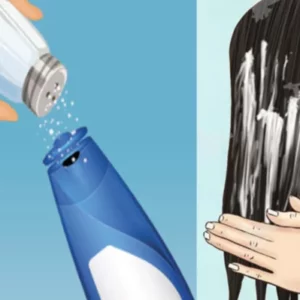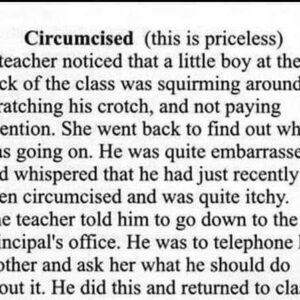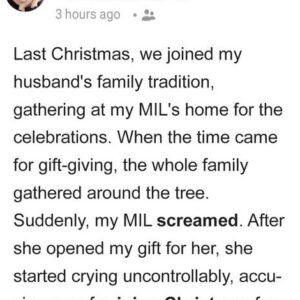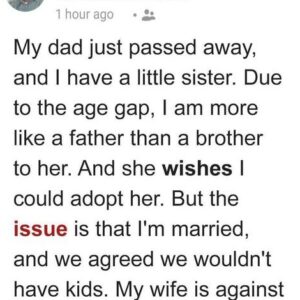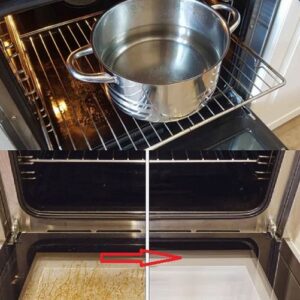When Nikki Martinez of Las Vegas was catching cats for neutering and spaying, she came upon a stumbling kitten on the porch.
Her husband grabbed the kitten while wearing gloves. They also discovered his siblings, who were all castrated, neutered, and vaccinated at a local veterinarian.
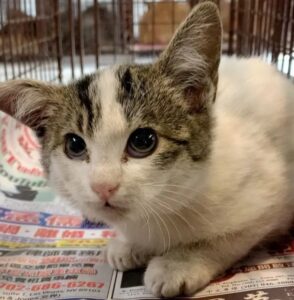
The teetering kitten was the tiniest and appeared to have the sweetest disposition. “His brothers and sisters snarled, spit, and rushed at us; he, on the other hand, silently hissed but let us touch him,” Nikki adds.
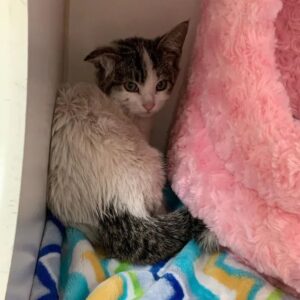
When Nikki later dropped in to check on the kittens at the clinic, she noticed that the staggering boy was much calmer than the others. She pulled him out of the cage, hoping for some kind of contact. “It turned out that once he calms down, he becomes very sweet, although shy.”
The kitten nuzzled her muzzle into her chest and clung to her paws. He didn’t move until he fell asleep in her arms.
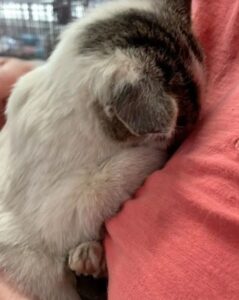
Cerebellar hypoplasia is a mild type of cerebellar hypoplasia in the kitten. For him, life on the streets would be extremely difficult.
“I observed that his ear was slightly curved and checked it as soon as the opportunity presented itself. “In the ear, there was a large wound with a scab,” Nikki explains.
“It appears like he was severely injured by another cat or animal.” As a result, living on the street with his sickness is impossible. He walks too slowly to avoid predators or passing automobiles’ wheels.”
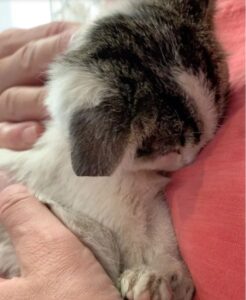
After wandering for 2.5 months, the kitten finally got to a safe house with a comfortable bed and plenty of food and was named Diddy.
Over the next few days, Diddy adjusted to the life of a house cat. He learned to eat from a bowl and skillfully use a tray and also began to play with toys.
Even staggering a little, he proves to everyone that he can do everything the same as other kittens.
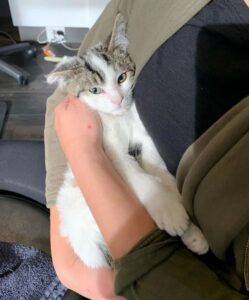
More than all, he adores extended embraces from human companions. “He got along swimmingly with us. “He appears to adore being held in his arms since he purrs nonstop at such times,” Nikki explains.
Nikki and her crew returned to the neighborhood to continue neutering, spaying and treating the local cats as required.
“It’s critical to capture their mother cat as well as other adults when rescuing kittens so that you can truly break the reproductive cycle.”

